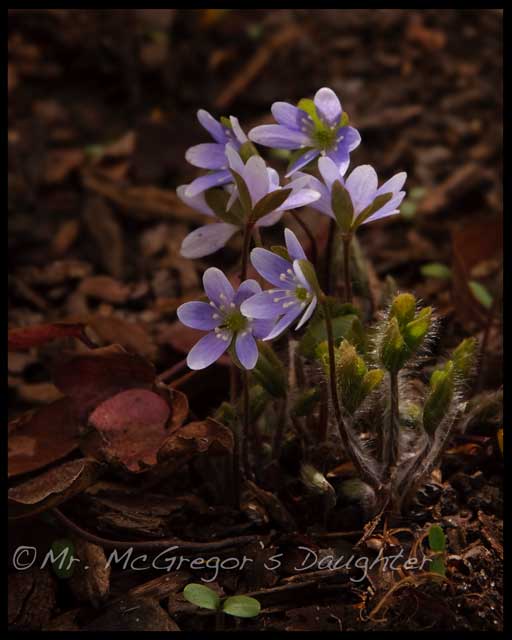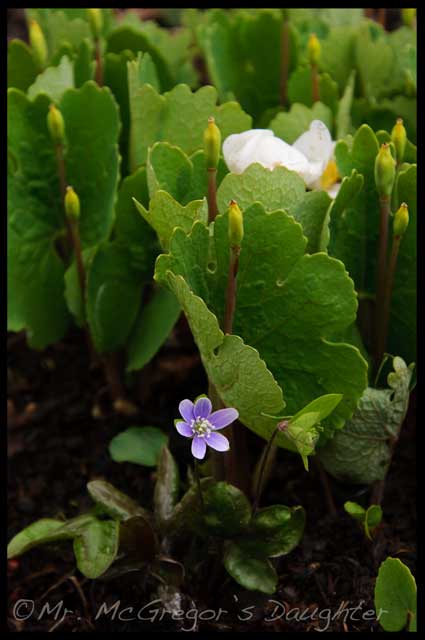
Blue flowers are something special, and blue Hepaticas are the most special of the little wildflowers. Their blooms can be pale pink, pale blue, purple or white. Shown above is Hepatica nobilis var. obtusa, the round-lobed hepatica, which in my garden blooms a lavender blue. According to Illinois Wildflowers, H. obtusa is confined to Northeastern Illinois.
This year, one of the other native species of hepatica, H. nobilis var acuta, bloomed the most heavenly deep blue, which is unusual for this species.

It's not a cultivar, this little plant is the progeny of the large clump with the lavender centered white blooms.

Nature's surprises can be quite the treat.
Hepaticas are evergreen, so I cut away the old foliage of H. acuta before they start to bloom. The flowers emerge before the fresh, new foliage. As the top photo shows, the flower stalks and new leaves emerge covered with hairs. I've left the old foliage on H. obtusa because that species is much less vigorous and needs all the help it can get. The sharp-lobed hepatica has spread its seeds with abandon, and I've had so many seedlings, I've been able to share them. By contrast, I still have only three round-lobed hepaticas, and one of them isn't doing so well. Once I found a seedling in the lawn, but it didn't survive the transplantation ordeal.
Both species like to grow under deciduous trees and shrubs, where they can get full sun while they bloom, and shade during the summer. As with most plants here at Squirrelhaven, they prefer well draining soil.
This post is part of Wildflower Week at Clay and Limestone. My defense of lawn violets is on yesterday's Beautiful Wildlife Garden.